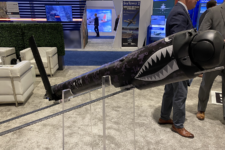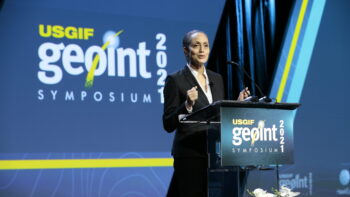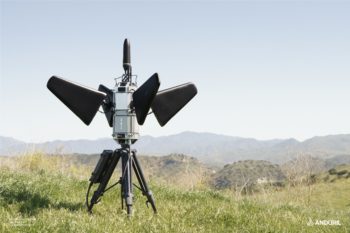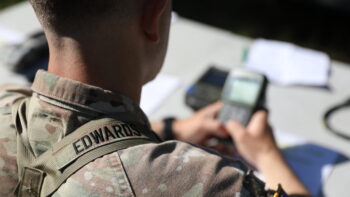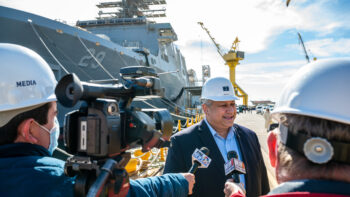
One of the biggest debates in the defense world centers on the nuclear triad. Is it too expensive? Does it actually deter anyone? Is it a Cold War relic or a crucial tool for managing risk? Some experts have argued that land-based missiles just aren’t needed. Others say nuclear-capable bombers are a big fat waste of money. A very few say boomers, as nuclear missile submarines are known, are just too expensive to invest in. None of this is being discussed very publicly so when the top general who oversees the Air Force weapons that deliver nuclear warheads, Maj. Gen. William Chambers, offered us an op-ed addressing the issue we jumped at the chance to run it. The Editor.
We have just marked 50 years since the Cuban Missile Crisis, two long weeks of terror embedded in the early years of the Cold War, itself an extended period of nuclear war angst.
For that fortnight in October 1962, when we and the Soviet Union teetered on the edge of destruction our nuclear forces played a central role in winning the peace.
Many today don’t remember how events on an island 90 miles away led us to the brink. In his 1953 farewell address President Harry Truman had claimed success in averting World War III and establishing conditions that would keep the peace “as far as man can see.”
This bold optimism, just seven years after the end of the war, came from the only leader to have authorized the use of nuclear weapons. Fewer than 10 years later, during the Cuban Missile Crisis, such optimism was proven misplaced as the United States and Soviet Union threatened an unthinkable nuclear exchange. We averted catastrophe then and must remain prepared to do so again.
Today, some contend that we no longer need the nuclear triad of Intercontinental Ballistic Missiles (ICBM), submarine-launched ballistic missiles, and heavy bombers [the next generation of these will be the system known as Long Range Strike] — arguing that only two of the three are essential. Such a view actually — and ironically — represents a position mired in Cold War thinking and fails to consider that the number of nuclear armed states is increasing, and the real potential for complex regional crises to approach the nuclear threshold in the near future. Detailed analysis done for the Nuclear Posture Review explored a range of force structures and determined we should retain the three delivery systems. In our Post-Cold War era, the triad continues to provide the best blend of capabilities to guarantee a safe, secure and effective nuclear deterrent.
In times of tight budgets, some claim we can no longer afford the triad and should eliminate one leg. Such an argument contains two fallacies. The first is that budget pressure should drive us to eliminate the ICBM. On the contrary, an enduring ICBM is an existential security requirement, true in flush times and lean. The second is that no future enemy would consider nuclear use or coercion. The existence of our credible nuclear deterrent is the very thing that turns that hope into reality.
Some also argue for eliminating the nuclear role of our bomber force, seeing little likelihood that they would be employed. The nuclear capable bomber remains a highly flexible deterrent critical in many potential crises. And, it is the most visible leg of the triad and therefore invaluable in demonstrating national resolve.
In neither flush times nor lean do we have room for unnecessary military forces. Indeed, not only do we need the ICBM and bomber forces, we can afford them. In 2011, the Air Force provided two legs of the triad for less than 1 percent of the total defense budget, the entire defense budget accounting for 4.5 percent of the gross domestic product (GDP). By comparison, defense accounted for 14.2 percent of GDP in 1953 when President Truman made his remarks.
During the Cold War, the fear was sometimes palpable. A generation of children endured more than 30 years of “Duck and Cover” exercises in school. Those days are long past. Those being promoted to colonel in today’s military entered the service after the fall of the Berlin Wall. We are in the Post-Post Cold War and we use nuclear weapons every day to generate the stability that underpins every tool of statecraft foundational to free and open markets. It’s a stability that prevented the deaths of tens of millions of civilians in wars between great powers that did not occur.
It’s difficult to imagine that an enemy would contemplate a nuclear attack on the United States. That’s in part a result of the success of our nuclear deterrent. But it’s also a result of internalizing ill-founded optimism, such as President Truman expressed. We didn’t foresee October 1962 and we can’t foresee the next major crisis, but we can ensure our nuclear forces remain flexible and resilient.
President Truman’s optimism may have been misplaced, but it was not naïve. It is naïve to think restraint is self-sustaining, a peaceful equilibrium on autopilot. As President Obama made clear in Prague, “we will reduce the role of nuclear weapons in our national security strategy, and urge others to do the same. Make no mistake: As long as these weapons exist, the United States will maintain a safe, secure and effective arsenal to deter any adversary, and guarantee that defense to our allies…” Today and tomorrow, the vigilance of our nuclear forces remains critical to ensuring the unforeseen challenges of the future are, like the Cuban Missile Crisis, resolved below the nuclear threshold.
Maj. Gen. Chambers is the Air Force’s assistant chief of staff for strategic deterrence and nuclear integration.
Space Force gets vote on IC Commercial Space Council
The status change should give the Space Force more weight in debate about how to share acquisition authority for commercial intelligence, surveillance and reconnaissance.




